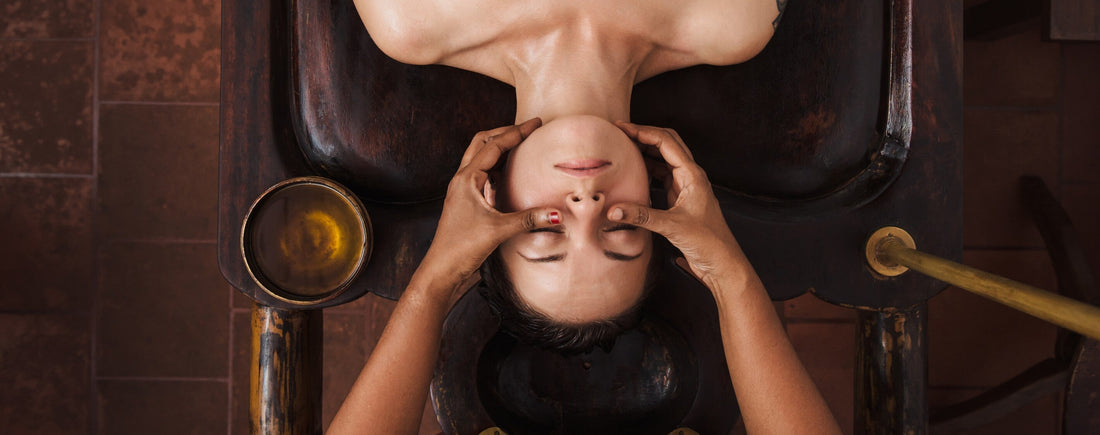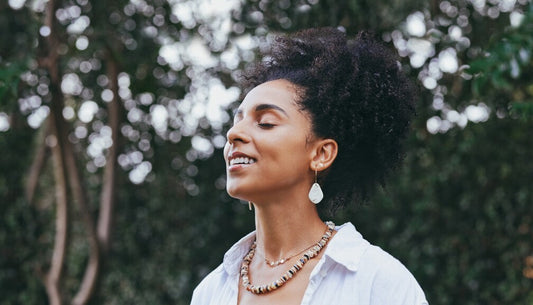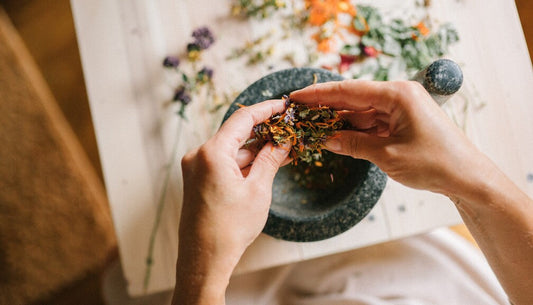Most people think of a detox as a superficial process. You change your diet, take supplements, or abstain from harmful substances, and the body does the rest. I am an advocate of all of these things. Unfortunately, many of my patients have health concerns that go beyond a poor diet. They need a multifaceted approach to rid their bodies of excess toxins so that they can function optimally.
When you carry a burden of toxins from various sources, you may experience weight gain, low energy, achy joints, skin rashes, or nagging headaches that don’t seem tied to any particular ailment. These are the tip of the iceberg in terms of your health. Eventually, they will tip over into actual health problems with your metabolism, heart, or another major organ. Or you will be more likely to face injury from exercise.
You can walk around in this state of lower-level toxicity for years, reaching for cold medicines, headache remedies, allergy medications, or antacids. You can reach for all kinds of over-the-counter remedies when what you need is a deep-tissue cleanse that will clear your body of all of the debris. You will need to use a combination of heat, oils, massage, and other treatments to get the body to purge the substances it has been holding on to.
Eating, exercising, and living in harmony with your dosha is essential for maintaining good health, yet Ayurveda offers an additional method for flushing ama (endotoxins) out of the body. When the seasons change, or if you need to address a particular health concern, you may need to cleanse and rebalance doshas that are aggravated or deficient. In Ayurveda, this detoxifying process is called panchakarma—literally “five actions” or “five treatments” in Sanskrit.
Discover your dosha type here.
Done under the care of an Ayurvedic practitioner, panchakarma is tailored to your dosha. Depending on your particular needs, it can involve oil massages, steam-sweat treatments, herbal enemas, nasal administrations of herbs and oils, and/or gentle laxatives and emetics. All of these techniques cleanse the body of ama that has been absorbed by the tissues and that could contribute to illness.
As one of the most effective healing modalities in Ayurvedic medicine, panchakarma detoxifies the body, strengthens the immune system, and restores balance and well-being. By activating the body’s organs of elimination—the sweat glands, lungs, bladder/urinary tract, stomach, intestines, colon—panchakarma rejuvenates body, mind, and spirit.
Panchakarma can usually be done over a period of three days to a week and should be done at an Ayurvedic retreat center or office—where you check in for the complete holistic immersion—or at the office of an Ayurvedic practitioner near your home—where you can go daily for treatments. Either way, you should clear or lighten your schedule so that you can focus on supporting your body and mind in letting go of what it doesn’t need—including old patterns, beliefs, and emotions.
Panchakarma therapy begins with a private consultation with a qualified Ayurvedic physician, who determines your prakriti and prescribes the therapies best suited to your imbalances and health concerns (if any). Trained therapists administer the procedures in a specific sequence. Panchakarma treatments are comfortable and deeply soothing, although some people experience periods of discomfort associated with toxin release.
Here’s a list of some of the most common panchakarma treatments:
There are many benefits to panchakarma treatments, including the following:
Your body is in perfect sync with mother nature, and the doshas are already on the move during the change of season. Spring and fall and the best times of the year as the body is ready for effortless detoxification. One week of a light diet, herbal teas, and a gentle cleanse will help you restore and renew your health.
To learn more, check out Panchakarma: The Ayurvedic Art and Science of Detoxification and Rejuvenation, a new book written by a family of Ayurvedic physicians, the Kshirsagar Family, who shares their expert view on the subject.
Nourish yourself with the ultimate well-being experience at the Chopra Health Retreat at CIVANA.
When you carry a burden of toxins from various sources, you may experience weight gain, low energy, achy joints, skin rashes, or nagging headaches that don’t seem tied to any particular ailment. These are the tip of the iceberg in terms of your health. Eventually, they will tip over into actual health problems with your metabolism, heart, or another major organ. Or you will be more likely to face injury from exercise.
You can walk around in this state of lower-level toxicity for years, reaching for cold medicines, headache remedies, allergy medications, or antacids. You can reach for all kinds of over-the-counter remedies when what you need is a deep-tissue cleanse that will clear your body of all of the debris. You will need to use a combination of heat, oils, massage, and other treatments to get the body to purge the substances it has been holding on to.
Eating, exercising, and living in harmony with your dosha is essential for maintaining good health, yet Ayurveda offers an additional method for flushing ama (endotoxins) out of the body. When the seasons change, or if you need to address a particular health concern, you may need to cleanse and rebalance doshas that are aggravated or deficient. In Ayurveda, this detoxifying process is called panchakarma—literally “five actions” or “five treatments” in Sanskrit.
Discover your dosha type here.
Done under the care of an Ayurvedic practitioner, panchakarma is tailored to your dosha. Depending on your particular needs, it can involve oil massages, steam-sweat treatments, herbal enemas, nasal administrations of herbs and oils, and/or gentle laxatives and emetics. All of these techniques cleanse the body of ama that has been absorbed by the tissues and that could contribute to illness.
As one of the most effective healing modalities in Ayurvedic medicine, panchakarma detoxifies the body, strengthens the immune system, and restores balance and well-being. By activating the body’s organs of elimination—the sweat glands, lungs, bladder/urinary tract, stomach, intestines, colon—panchakarma rejuvenates body, mind, and spirit.
Panchakarma Treatments
Panchakarma can usually be done over a period of three days to a week and should be done at an Ayurvedic retreat center or office—where you check in for the complete holistic immersion—or at the office of an Ayurvedic practitioner near your home—where you can go daily for treatments. Either way, you should clear or lighten your schedule so that you can focus on supporting your body and mind in letting go of what it doesn’t need—including old patterns, beliefs, and emotions.
Panchakarma therapy begins with a private consultation with a qualified Ayurvedic physician, who determines your prakriti and prescribes the therapies best suited to your imbalances and health concerns (if any). Trained therapists administer the procedures in a specific sequence. Panchakarma treatments are comfortable and deeply soothing, although some people experience periods of discomfort associated with toxin release.
Common Panchakarma Treatments
Here’s a list of some of the most common panchakarma treatments:
- Abyanga: A relaxing, herbal-oil massage that removes impurities by stimulating arterial and lymphatic circulation.
- Shirodhara: A stream of warm, herb-infused oil is poured over the forehead to create a profoundly calming effect on mind, body, and spirit.
- Garshana: A dry, lymphatic skin brushing—done with either wool or a silk glove—enhances circulation and cleanses the skin pores.
- Swedana: This therapeutic steam bath is done by keeping the patient’s head and heart cool while the rest of the body is heated. Sweating removes mental, emotional, and physical toxins lodged deep in the tissues.
- Udvartana: An exfoliating herbal paste is applied to the skin and finished with a lymphatic massage. The result is radiant skin and the release of stagnant lymphatic toxins.
- Basti: An herbal enema that flushes toxins out of the colon.
- Nasya: An herbal preparation and/or oil drops are inhaled through the nose; the result is that the sinuses are cleared of excessive mucus.
Benefits of Panchakarma
There are many benefits to panchakarma treatments, including the following:
- Increased energy
- Effective weight management
- Improved mental functioning and increased sense of well-being and joy
- Reduction of cravings and dependence on habit-forming foods and substances (e.g., caffeine, alcohol, sugar)
- Increased willpower and discipline
- Radiant, luminous skin
- Efficient and effective digestion
- Reduced toxicity
- Awareness toward health-conscious diet and lifestyle
Your body is in perfect sync with mother nature, and the doshas are already on the move during the change of season. Spring and fall and the best times of the year as the body is ready for effortless detoxification. One week of a light diet, herbal teas, and a gentle cleanse will help you restore and renew your health.
To learn more, check out Panchakarma: The Ayurvedic Art and Science of Detoxification and Rejuvenation, a new book written by a family of Ayurvedic physicians, the Kshirsagar Family, who shares their expert view on the subject.
Nourish yourself with the ultimate well-being experience at the Chopra Health Retreat at CIVANA.






















